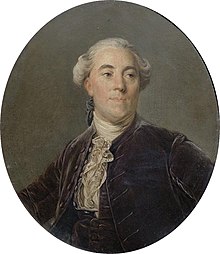If the Patriots lose, M.H.S. president Catherine Allgor has promised to go to Philadelphia and give a talk about how that city is the true “cradle of liberty.” If the Eagles lose, M.O.A.R. president Michael C. Quinn will come to Boston and explain how it really deserves that sobriquet.
Football aside, which city has been labeled the “cradle of liberty” the longest is a historical question. When was the phrase coined and applied to either city or a site within either city? As far as Google Books cares, the signs point decisively toward Boston.
In their 1837 annual report, the Board of Managers of the New-England Anti-Slavery Society applied the label to a building:
Prior to the observance of the 22d, it was deemed important by the friends of free discussion and the liberty of the press, that, if practicable, a spontaneous public meeting of the citizens of Boston should be held, without distinction of sect or party, and without any reference to the merits of the anti-slavery controversy, to express their alarm and horror in view of the prostration of civil liberty, and the murder of a christian minister for daring to maintain his inalienable and constitutional rights. Such an example, it was thought, would produce a salutary effect upon public sentiment abroad, and, if set in a right spirit, would serve, in some degree, to atone for the disgraceful proslavery riot that occurred in Boston, October 21st, 1835. Faneuil Hall, “the old Cradle of Liberty,” was deemed the most suitable building in which to hold the meeting.The phrase “the old cradle of liberty” appears in several publications from the 1840s, referring to either Boston in general or Fanueil Hall in particular. The word “old” and the quotation marks suggest that it had become a bit cliché even then.
So let’s go further back. Lafayette, visiting Boston in 1824, was feted at the Exchange Coffee House. He offered this toast:
The City of Boston, the cradle of liberty.—May Faneuil Hall ever stand a monument to teach the world, that resistance to oppression is a duty, and will, under true republican institutions, become a blessing.And back further. Rep. Josiah Quincy, speaking in Congress in November 1808 against President Thomas Jefferson’s embargo, provided this unfortunately extended metaphor:
But, it has been asked, in debate, “will not Massachusetts, the cradle of liberty, submit to such privations?” An embargo liberty was never cradled in Massachusetts. Our liberty was not so much a mountain as a sea nymph. She was free as air. She could swim, or she could run. The ocean was her cradle. Our fathers met her as she came, like the goddess of beauty, from the waves. They caught her as she was sporting on the beach. They courted her while she was spreading her nets upon the rocks. But an embargo liberty—a hand-cuffed liberty—a liberty in fetters, a liberty traversing between the four sides of a prison and beating her head against the walls, is none of our offspring. We abjure the monster. Its parentage is all inland.So that seems to clinch it: two figures who actually lived through the American Revolution—one as a young general and the other as a little boy, son of a dead Patriot—said that either “Boston” and “Massachusetts” was the cradle of liberty. I didn’t find the phrase applied to Philadelphia in that period at all.
But not so fast! Jacques Necker (1732-1804, shown above) was a Swiss banker who became finance minister of France during the American War for Independence and then again in 1789-90. In 1792 his book An Essay on the True Principles of Executive Power in Great States was translated and published in London. In it he exhorted the English nation to maintain its support for constitutionalism:
You, who are the ardent propagators of novelties not yet proved, respect this cradle of liberty; respect the country in which freedom took birth, the country destined perhaps to remain its sole asylum, if ever your own exaggerations should drive it from among you. And you, generous nation, you, our first instructors in the knowledge and love of liberty, continue long to preserve the good of which you are in possession.So the earliest use of the phrase “cradle of liberty” that I found applied it to…England.

Not grasping how the Presidents of the MHS and the Museum of the American Revolution would know anything about the interests and desires of the general public -- but they and I may just run in different circles --
ReplyDeleteIn 2011, Americans visited museums about 850 times, compared to 483 million visits to major-league sporting events and theme parks.
ReplyDeleteSomething wrong with the math in your last comment, John. The 483 million annual visits to major-league sporting events and theme parks sounds right, but only 850 visits to museums in the whole country in a year? I can think of several museums in Boston that attract more than 850 people in a single day. Must have missed a decimal place somewhere.
ReplyDeleteI stand corrected -- gotta say, though, the sports fans talk up their obsession more than the museum fans --
ReplyDeleteSorry, both those numbers should be in the millions: 850,000,000 museum visits versus 483,000,000 visits to major-league sporting events and theme parks.
ReplyDeleteThat statistic comes from a museum association. And we might note some slants to it. It appears to count all museums but only the top-level sporting events. It doesn’t count public engagement through television. Some of the most popular museums are free. And many museum visits are school field trips.
Nonetheless, it's a valuable reminder that museums are as crucial a part of our culture as those parts that get more marketing dollars and media attention.
Any comment from Dr. Allgor at the MHS?
ReplyDelete